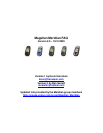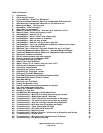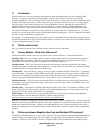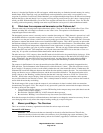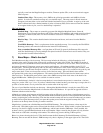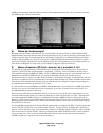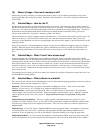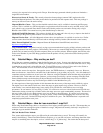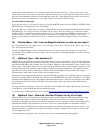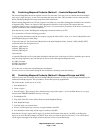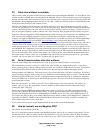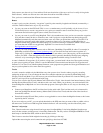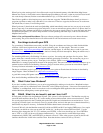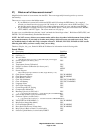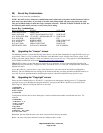
Magellan Meridian FAQ – Version 2.0
Page 5 of 30
however, is that the SporTrak has no SD card support, which means they are limited to internal memory for storing
detailed maps. With a SporTrak, only one detailed map can be uploaded at a time, and it is not possible to save
waypoint or track files to an SD card. With a Meridian, you can upload multiple map files to the SD card and change
between the files on the unit (handy if you’re going on a long driving vacation and you don’t have a laptop along to
reload your GPS. With the Meridian, you can also save waypoint and track files to an SD card. Note - An SD card
is usually purchased separately, although some units may include the card as part of a software/hardware bundle.
5) What does the compass and barometer on the Platinum do?
There are other units with integrated compass/barometer options. These units, like the Garmin eTrex Vista, eTrex
Summit, and Map 76S, will simply be referred to as the "other" units . The operation of the Platinum will be
compared against those other units.
The barometric pressure sensor is currently used as a weather forecasting tool. While the unit is powered on, it will
use the GPS altitude to correct the current pressure to obtain a "sea level pressure." The unit can display a plot of
the pressure over the past 24 hours, which can be used to predict good or bad weather. Other GPS units can use the
barometer to estimate the altitude in the event of insufficient GPS reception. This is NOT currently an option with
the Platinum, although it is reasonable to expect this may be added with a future firmware. The thermometer, other
than being used for internal temperature compensation of some components, is simply used as a weather-watching
feature. It is not possible to get a plot of previous temperatures. The unit can only read the ambient temperature
inside of the GPS case itself. This temperature may be quite inaccurate if the GPS is left on the dash of a car on a
sunny day. It is possible to calibrate both the thermometer and the barometer.
The other units use a "2-D" compass, where the GPS needs to be held level to the ground (display facing up). If the
unit it tipped upright, such that the display faces the horizon, then the compass in the other units will simply fail to
work. Furthermore, the other GPS units have a threshold speed. Anything below this speed and the heading is
obtained from the compass. If you are traveling above this speed, then the heading is obtained from the GPS
motion.
The compass in the Platinum is far more advanced than in other GPS units, and is completely integrated into the
GPS operation. The inclinometers in the Platinum tell it which direction is "down." Thus, the unit knows exactly
how to read its 3-D compass in order to work reliably whether the unit is horizontal OR vertical. Furthermore, the
Platinum GPS can tell the difference between the motion direction and the compass direction. You can hold the unit
facing one direction, move a different direction, and the unit can tell the difference. The direction that the unit is
facing is known as the "Heading," and the direction that the unit is moving is known as "COG" for "Course Over
Ground." While in the compass display, North will be shown correctly in the proper orientation, and a separate
arrow will be added for the direction of travel. This is a handy feature for boaters so they can know where north is,
and in which direction they are drifting.
The disadvantage of this system is that the compass is active whenever its data is needed, which can somewhat
shorten battery life (approx. 25%). The compass is only powered if a particular screen needs the compass direction.
In order to deactivate the compass:
§ You will need to tell the compass to use the GPS heading in the compass setup screen (this deactivates the
compass on the compass display)
§ Be certain the "Magnetic HDG up" is NOT selected in the map screen
§ Be certain that "Heading" is not selected on any data screens (use COG instead).
Note that the compass should be re-calibrated whenever the batteries are changed to ensure best accuracy. In most
cases changing batteries only affects the compass heading reading by a couple of degrees.
6) Memory and Maps – The Overview
This is an overview of memory organization and where the various maps are located.
Internal FLASH Memory
Firmware – The software code that runs internally in the unit is called the firmware. This tells the
electronics (hardware) in the unit what to do and how to do it (like displaying screens and menus). The
firmware is stored in the internal memory and can be ‘flashed’ (upgraded) to a different version. Updates



